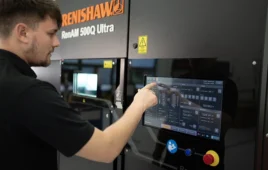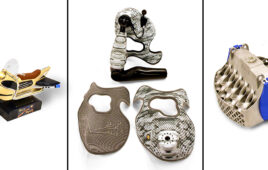When it comes to utilizing 3d printing for rapid prototyping, you are rewarded with parts for new medical devices as well as other products. This often means design risk reduction.
3D Prototype Designs Deliver Injection Molded Parts and Devices
Parts for products will range from instruments that are necessary for surgery – to glucose monitors. These are often produced using injection molding and CNC machining, depending on the parts.

Engineers or product designers will benefit by integrating 3d printing and injection molding. This needs to be done during post-launching phases for the product.
This prototype development process provides us with hands-on physical products. Experts who are capable of getting the product to look and feel exactly the way you want can then review these. It is one of the best ways to get detailed feedback about the product to secure your product’s success.
Bringing a design from idea to reality by using 3D printing, low volume injection molding, and machining simply speeds the process of validation and verification for the FDA 510(k) premarket submission.
3D printing has proven intensely valuable for complex designs and multipart assemblies. Providing accurate testing (including tests that digital analysis may miss) make it especially valuable for early evaluation of new parts.
What Do 3d Printing Processes Include?
Stereolithography (SL) is an often used additive technology. It is best for concept modeling as well as prototypes for thermoplastic-like parts. This process delivers components representing production parts that have intense detail while being very useful in testing, for marketing purposes, and to showcase how users in a clinic or hospital will make that tool or device work.
It is critical to understand that any exposure to ultraviolet light or humidity will change both the properties and the appearance of any finished SL parts.
Selective Laser Sintering
Selective laser sintering (SLS) is also a 3D process. It uses thermoplastic nylons to produce accurate and durable parts. SLS parts are produced for processing difficult-to-mold components. This is because they reduce weight, while cutting the number of parts in an assembly as well as shrinking assembly time.
Polyjet 3D For Exceptional Detail
Polyjet 3D printing processes deliver extraordinary detail. It also delivers precision and surface smoothness for parts requiring a specific final product aesthetic. The process delivers:
- Extremely complex shapes
- Intricate details
- Delicate features of parts
- Produces accurate molds, heat resistant fixtures, jigs
- Manufacturing tools
Rigid Opaque materials are delivered with detailed visualization in black, gray, white and blue colors. This is for testing fit, form and function of parts. It also helps moving components and complex assemblies.
Polypropylene-like materials offer flexibility. They provide snap-fit applications and living hinges. Toughness and strength of the 3d printed parts feel and look like final polypropylene products.
Rubber-like materials offer elastomer characteristics. These provide soft-tough coatings and non-slip surfaces. These are ideal for tooling or prototypes bound for rugged use.
3D Printing Provides Repeatability and Precision in Small Numbers
It is important to understand that the 3D printing process is representative of the injection molding process. It is also possible for a designer to create a 3d part that is impossible to produce using injection molding. This is the reason the needs of injection mold tooling should be considered when designing a 3d printed part.
It can be done by first designing draft into the part. That way when it comes time for injection molding – you won’t have to return to the CAD file and modify the design. You can simply maintain a consistent wall thickness to secure good injection molded components. This approach prevents any potential for sink, warps or voids.
You can also apply other modifications. These features can specifically be used to reduce stress concentrations applying to both 3d printing and injection molding for details like rounded corners, support ribs, gussets or bosses.
For expert 3D education and production – contact the industry leaders at Crescent Industries, an employee owned company that has been leading the injection molding field for more than two decades.
Citation:
Design World March 2017 “How to efficiently move from 3D printing to injection molding” written by Todd Nelson at Proto Labs (items involving the different types of 3d printing process except the polyjet)
Crescent Industries
Filed Under: 3D printing • additive • stereolithography, Make Parts Fast





Tell Us What You Think!